5 Dining Room Paint Color Ideas to Transform Your Space
Choosing the right dining room paint color ideas can greatly impact the look and feel of a dining room. It sets the mood and complements the furniture and décor. Many people want to find colors that create a comfortable and inviting space for meals and gatherings.

The best dining room paint color ideas balance style with the room’s purpose and lighting. Colors can range from calm neutrals to bold shades, depending on the desired atmosphere. This article explores different options to help readers make the right choice.
1) City Loft SW 7631 by Sherwin-Williams – a sophisticated neutral gray

City Loft SW 7631 is a neutral gray paint with subtle taupe undertones. It balances between warm gray and taupe, making it a versatile choice.
It works well in dining rooms because it creates a calm and elegant atmosphere. The color pairs easily with both warm and cool accents.
Designers recommend City Loft for those who want a modern yet soft look. It fits many styles without overwhelming the space. See more about City Loft SW 7631 here.
2) Aleutian SW 6241 by Sherwin-Williams – a cool, calming gray-blue
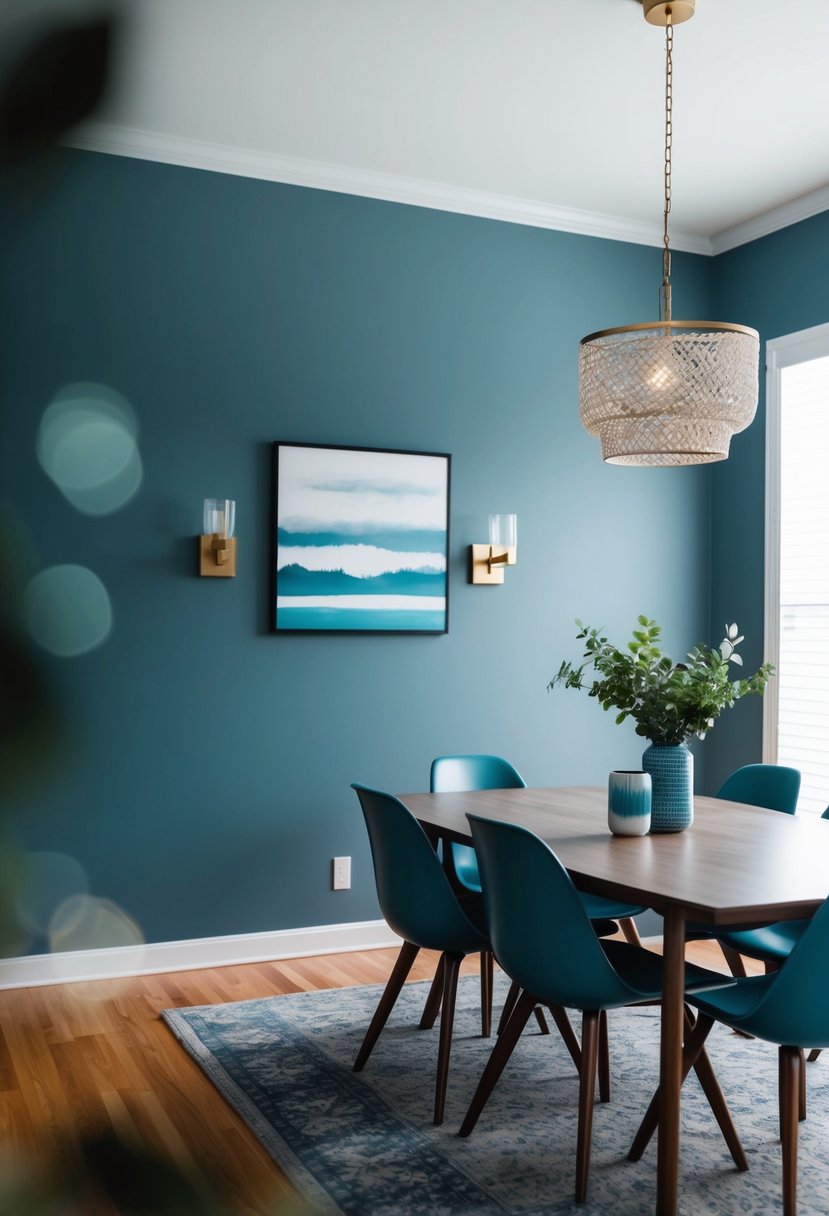
Cool gray with blue undertones offers a balanced and refreshing look that fits perfectly in home gyms or modern living spaces. This subtle blend creates a calm yet energized atmosphere, ideal for focus and relaxation.
The color pairs well with sleek black equipment, light wood, or neutral-toned furnishings, adding sophistication without overwhelming the room. Its versatility makes it suitable for both minimalist and contemporary designs.
Whether you’re aiming for a serene workout space or a clean, modern feel, cool gray with a touch of blue delivers a polished and timeless look.
For more details, see Aleutian SW 6241 by Sherwin-Williams.
3) Taiga SW 9654 by Sherwin-Williams – an earthy, muted green
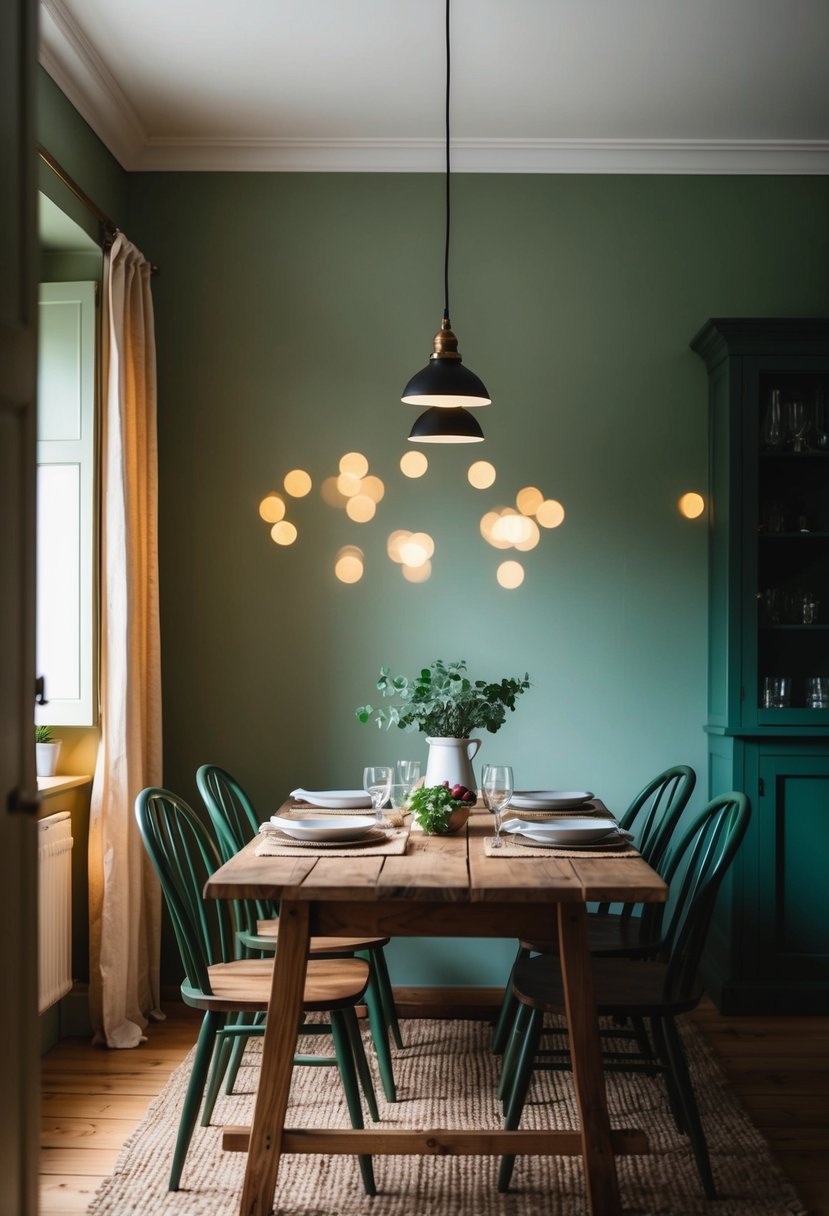
Taiga SW 9654 is a soft, muted green that brings an earthy feel to a dining room. It creates a calm and peaceful atmosphere without being too bold.
This color works well with off-white accents and pairs nicely with soft blues and greens. It offers a modern twist while maintaining a natural look.
Taiga is a great choice for those who want a subtle green that feels fresh but understated. You can see more about Taiga at Sherwin-Williams’ page on Taiga SW 9654.
4) Saguaro SW 6419 by Sherwin-Williams – a warm desert-inspired tone

Saguaro SW 6419 is a muted green with subtle yellow undertones. It creates a calm, natural feel in dining rooms.
This color pairs well with earthy shades and neutral tones. It adds warmth without being overwhelming.
Its desert-inspired look suits both modern and rustic spaces. For more details, see Saguaro SW 6419 by Sherwin-Williams.
5) Soft Sage Green – a subtle hint of color that pairs well with neutrals

Soft sage green adds a gentle touch of color without overwhelming the room. It has muted gray undertones that create a calm and inviting feel.
This color works well with neutral shades like white, beige, and gray. These combinations help keep the dining space balanced and soothing.
It suits both modern and traditional dining rooms. Using soft sage green can bring a fresh, natural look that complements many decor styles.
For more ideas on using this shade, see soft sage by Sherwin Williams and coordinating colors.
How Paint Colors Influence Dining Room Atmosphere
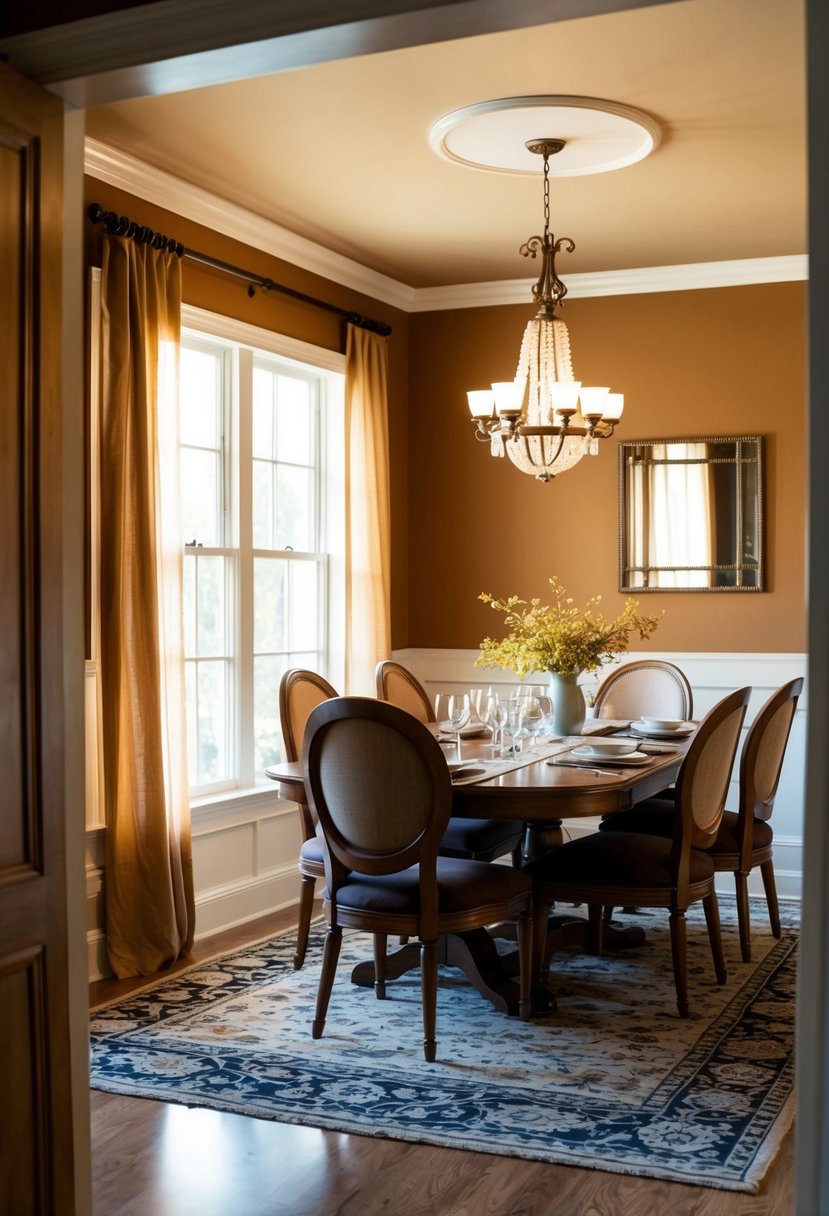
Paint colors shape the mood and feel of a dining room by affecting emotions and perceived space. The right tones can encourage relaxation, focus, or social interaction depending on their qualities and how they work with lighting.
Color Psychology in Dining Spaces
Colors can impact how people feel and behave while dining. Warm colors like light browns and muted maroons create a cozy, welcoming atmosphere. These hues make guests feel comfortable and can encourage conversation and enjoyment.
Cooler tones such as dark greens and navy blues promote calmness and concentration. They work well in spaces where the goal is a quieter, more focused environment. Neutral shades balance these effects by adding simplicity and versatility.
Choosing colors based on these responses helps set the tone for meals. Many designers recommend pairing warm tones with social settings and cooler or neutral colors with intimate or functional dining areas. For more ideas on paints that affect mood, see dining room paint colors and atmosphere.
Lighting and Paint Color Interactions
Lighting changes how paint colors appear and influence the room’s atmosphere. Natural light tends to brighten colors, making lighter shades feel airier and more open. This makes rooms seem larger and more inviting.
Artificial light can enhance or dull paint hues. Warm lighting emphasizes warm colors, adding softness, while cool lighting highlights blues and greens for a sharper look. Darker paint colors absorb more light, creating a cozy but smaller feel.
It’s important to test paint samples at different times of day under both natural and artificial lighting. This helps ensure the chosen color performs well and achieves the desired ambiance. For tips on pairing colors with lighting, see this guide on dining room color inspiration.
Tips for Selecting the Right Hue
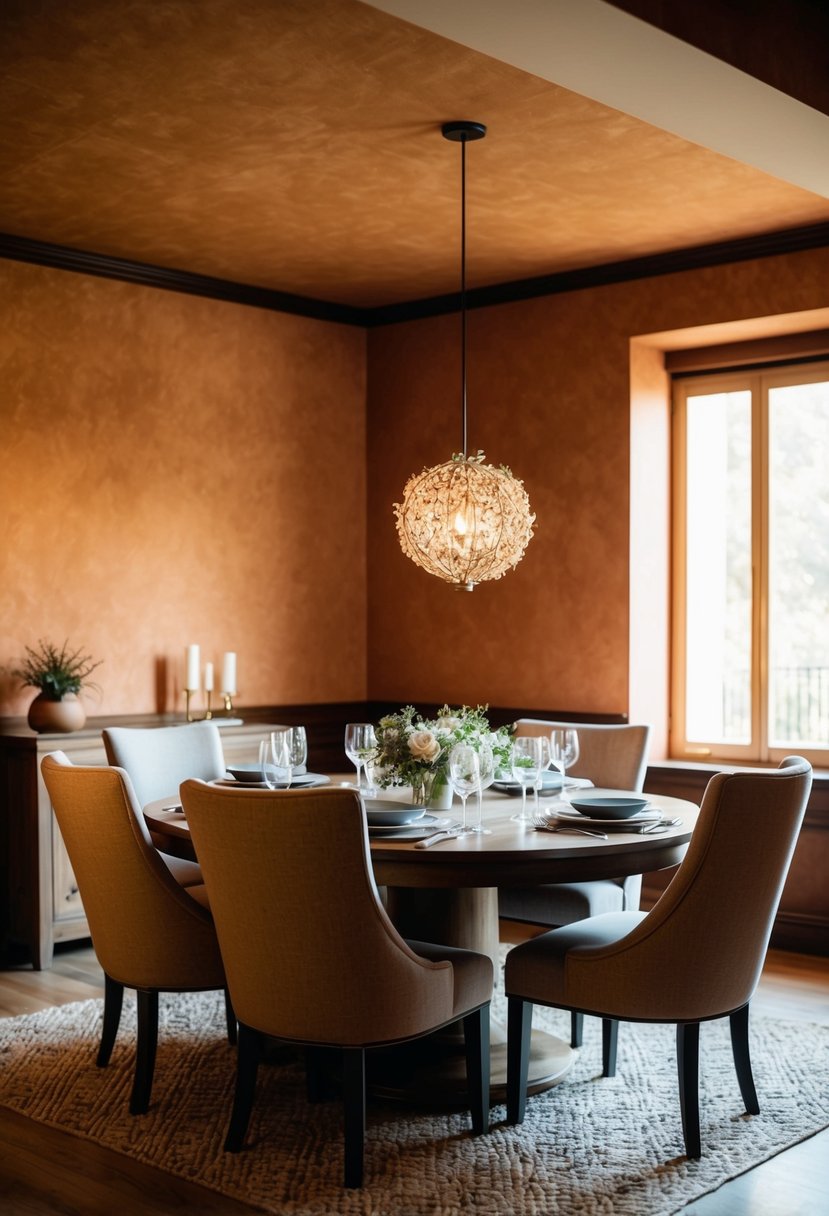
Choosing the right paint color requires thinking about the room’s existing features and how space affects color perception. Selecting a hue that works well with furniture and room size can change the dining room’s mood and feel.
Coordinating With Furniture and Decor
The paint color should blend well with the dining room’s furniture and decor. Dark wood furniture pairs well with warm, muted tones like beige, taupe, or soft gray. For rooms with light-colored furniture, cool shades such as pale blue or green can create a fresh look.
Considering the style is important too. Traditional furniture might call for richer colors, while modern decor benefits from crisp whites or grays. It helps to test paint samples near key pieces to see how the colors interact with fabrics, flooring, and accessories.
Considering Room Size and Layout
Room size greatly influences color choice. Small rooms look larger with light, cool colors like soft whites or pale grays because they reflect more light. Dark colors can make a large dining room feel cozy but may overwhelm smaller spaces.
Layout matters as well. If the dining room opens to other rooms, choosing colors that flow well into adjacent spaces helps create a unified look. Accent walls can add interest but should not clash with the overall palette.
More details on paint color and design balance can be found in dining room paint ideas from designers at Veranda.
Conclusion about Dining Room Paint Color Ideas
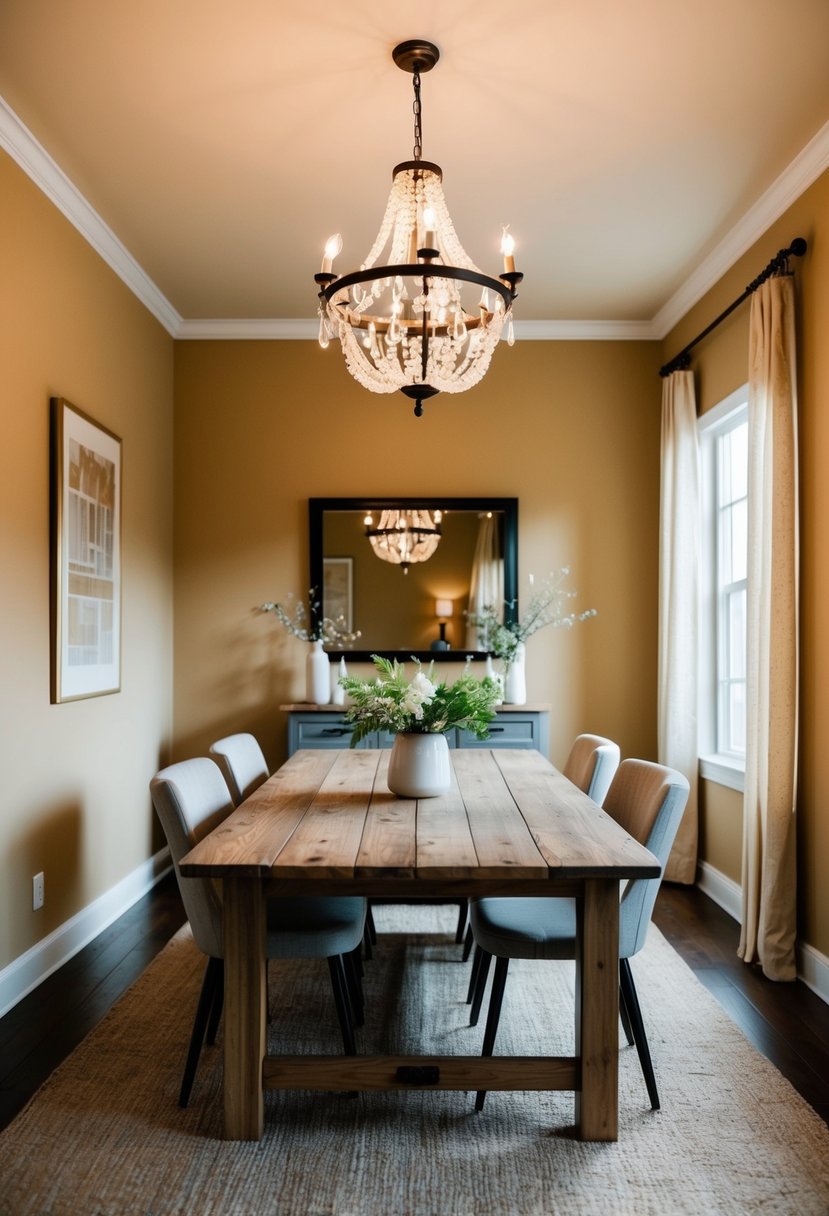
Choosing the right paint color for a dining room depends on the atmosphere they want to create. Warm colors like soft yellows, rich oranges, and earthy reds make the space feel cozy and inviting. Cooler shades can add calmness and elegance.
It helps to consider the room’s lighting when picking colors. Natural light can change how paint looks during the day. Using samples on the walls before committing can prevent mistakes.
A balanced color palette often combines one main color with complementary accents. This approach adds depth and interest without overwhelming the space.
Tips for selecting dining room paint colors:
- Test colors in different light
- Think about the room’s function
- Use warm colors for a cozy feel
- Choose cool tones for a fresh look
- Combine colors for a layered design
Small details, like matching paint with furniture and décor, enhance the dining experience. Ultimately, the best color choices reflect personal style and the room’s purpose.




